Home |
Contents |
Photos |
News |
Reviews |
Store |
Forum |
ICI |
Educators |
Fans |
Contests |
Help |
FAQ |
Info


Highlights of the US Report to the UN on Racism
(9/22/00)
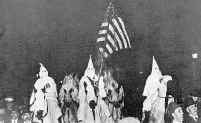
The truth is that the country does not know what to do with its black population now that the blacks are no longer a source of wealth, are no longer to be bought and sold and bred, like cattle; and they especially do not know what to do with young black men, who pose as devastating a threat to the economy as they do to the morals of young white cheerleaders. It is not at all accidental that the jails and the army and the needle claim so many, but there are still too many prancing about for the public comfort.
Americans will, of course, deny, with horror, that they are dreaming of anything like "the final solution" — those Americans, that is, who are likely to be asked: what goes on in the vast, private hinterland of the American heart can only be guessed at, by observing the way the country goes these days.
James Baldwin, No Name in the Street, 1972
*****
Racism persists
A summary of the findings prepared by the Clinton administration for the Geneva-based United Nations Committee on the Elimination of Racial Discrimination. From the LA Times, 9/20/00:
"Racial discrimination persists against various groups, despite the progress made through the enactment of major civil rights legislation," said the report, prepared by the State Department with the aid of the White House, the Justice Department and other agencies. "The path towards true racial equality has been uneven and substantial barriers must still be overcome."
But the report was unsparing in its catalog of racial abuses, citing:
- "The persistence of attitudes, policies and practices reflecting a legacy of segregation, ignorance, stereotyping, discrimination and disparities in opportunity and achievement.
- "Inadequate enforcement of existing anti-discrimination laws.
- "Economic disadvantage. . . . Persons belonging to minority groups are disproportionately at the bottom of the income distribution curve.
- "Persistent discrimination in employment and labor relations.
- "Continued segregation and discrimination in housing . . . , public accommodation and consumer goods. Even where civil rights laws prohibit segregation and discrimination in these areas, such practices continue.
- "Lack of access to business capital and credit markets.
- "Lack of access to technology and high-technology skills.
- "Lack of educational opportunities.
- "Discrimination in the criminal justice system."
The report also cited examples of racial bias in the United States, including the beating of black motorist Rodney G. King by Los Angeles police officers; the murder of James Byrd Jr., a black man who was dragged to death behind a pickup truck in Texas; and a Florida hotel's requirement that blacks wear wrist bands to identify them as guests.
Although examples of racism against blacks get the most press, America's indigenous people have arguably suffered worse. Because they've played a unique role as obstacles to and challengers of the spread of Euro-American dominance, that shouldn't be surprising. A 1998 article in the Oklahoma Indian Times says it all:

Clinton Report On Race Says Indians Suffer Most
Report Not The First To Point At Dismal Record
by Louis Gray
Grim Picture of Indian Life
According to a presidential report "One America: Initiative on Race," Native Americans suffer from racism more than any other group. Economic and physical abuse are just some of the examples listed in the report. Others are the highest instances of suicide, lowest life expectancy, highest levels of infant mortality, and highest unemployment rate.
Statistical evidence of racism
1 in 6 people subjected to racism: report
Last Updated Mon, 21 Mar 2005 08:40:03 EST CBC News
OTTAWA -- About one in six Canadian adults – roughly four million people – have been victims of racism, a survey suggests.
Conversely, one in 10 respondents said they wouldn't want people from another race as next-door neighbours, according to the Ipsos-Reid study to be released Monday.
A greater number – 13 per cent – told pollsters they would never marry or have a relationship with someone from another race.
The study was commissioned by the Dominion Institute to mark the International Day for the Elimination of Racial Discrimination.
The survey results challenge Canadians' perception that the country is a model of tolerance and multiculturalism, according to the institute's director, Rudyard Griffiths.
"We knew that racism was a problem of the last generation. Well, according to four million of our fellow citizens, they feel that they've been the victim of racism," Griffiths told the Canadian Press.
"I think that shows that we can't be kind of complacent about the need to challenge racism whenever it rears its ugly head."
Most respondents in the study said they didn't think the amount of racism in their communities had changed much in the past five years.
Nearly 15 per cent of the 1,001 people surveyed said they thought skin colour made a difference at work.
The results of the survey, conducted March 12 to 15, are considered accurate to within plus or minus 3.1 percentage points, 19 times out of 20.
For those who think racial prejudice isn't deeply ingrained in our society, here's a sobering news item. From the LA Times, 4/25/01:
After a U.S. spy plane collided with a Chinese fighter jet along the coast of southeast China earlier this month, a rash of talk show hosts and radio personalities called for the internment of people of Chinese ancestry. Some even urged a boycott of Chinese restaurants and made fun of Asian accents.
As the article reports, a Chinese-American survey turned up some startling results:
Asians Americans were second only to African Americans as undesirable marriage partners. A third of respondents said they disapproved of marrying blacks, compared to 24% for Asians, 21% for Latinos and 16% for Jews.
As for housing, Americans preferred to be neighbors of Asians rather than blacks and Latinos. Seventeen percent of the respondents said they would be upset if an Asian moved into their neighborhood, 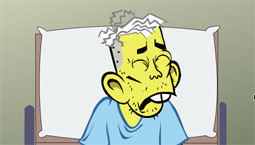 compared to 21% for Latinos, 19% for blacks and 9% for Jews.
compared to 21% for Latinos, 19% for blacks and 9% for Jews.
The statistics on America's marriage preferences are especially revealing. It's relatively easy to tolerate "those people" when they live in another town or neighborhood. It's harder if you're intimately involved with them, sharing the same house and bed. If a third of Americans say they wouldn't marry certain people because of their skin color, then a third of Americans are racist.
Further showing that this is no aberration, a poll in the Washington Post (6/21/01) reported: "Nearly half of African-Americans said they have been the victims of discrimination in the past 10 years."
And more:
White students believe being black would require $50 million in compensation
Department of Justice: One in 10 hate crimes target American Indians
For some experimental evidence, see The Trouble with Stereotyping...and What to Do About It.
Anecdotal evidence of racism
Below are two of the many, many examples we could find in the news, showing how racism affects every minority:
White men accused of attacks on Spokane Indians
Associated Press
SPRINGDALE — Bands of young white men are attacking Indians in a spate of racially motivated violence in this small town near the Spokane Indian Reservation, police say.
Since December, there have been four incidents in the town of 265 people in which young white men have assaulted Native Americans or subjected them to ethnic slurs. Three of the victims were seriously injured.
Police Chief Jim Parsley and two unpaid reserve officers are struggling to control the problem.
"The assaults appear to be occurring solely due to the Native American heritage of our victims," Parsley said. "They've been heard to say, 'This is a white man's town. Go back to the reservation.' "
Parsley vowed to stop the recent outbreak, despite his limited resources. "We're going to go after this full-bore," he said.
Springdale is 12 miles north of the Spokane Reservation in northeastern Washington.
The attacks began Dec. 1, when Springdale resident Timothy A.M. Banks, 23, allegedly used a pipe to assault a member of the tribe.
Banks is a fugitive from Stevens County with warrants charging him with second-degree assault with a deadly weapon and other crimes.
Court documents say Wellpinit resident Jeffrey Ford was standing outside the Depot Tavern in downtown Springdale when Banks allegedly drove up and bashed Ford's elbow with a pipe.
Stevens County Deputy Prosecutor Al Nielson said in a court document that Banks also heavily damaged Ford's vehicle by smashing out the windows and crunching the metal.
Banks' brother, James R.C. Banks, 19, was charged in January with harassing two Springdale residents, assaulting one of them and trespassing on their property. James Banks allegedly went to the home of Dawn Houston and Gregory Green on Jan. 8 and threatened to kill them.
The crimes occurred one day after James and Timothy Banks allegedly called and threatened Houston and Green to keep them from testifying against Timothy Banks in another case involving an attack on an Indian, Nielson said.
James Banks was charged with harassment, assault and trespass. He pleaded innocent and faces trial April 11.

No other charges have been filed, but Parsley is seeking warrants to arrest two brothers from another family for allegedly harassing two Indian women and seriously injuring the husband of one of them Jan. 8. Parsley declined to identify the men but said, "They hang out with the Banks brothers."
The incident occurred when Misty Ford and her sister-in-law, Sherry Andrews, came out of Springdale Grocery & Hardware and the two brothers called them names and shoved them.
Ford said her husband, Steven Andrews, got out of the van to protect them, but the suspects hit him in the face and knocked him down. Parsley said Andrews was knocked unconscious.
Nielson said he is waiting for more information in that case before deciding whether to prosecute.
Nielsen said he does not have enough evidence to file charges in another incident, on Feb. 18, that turned into a cross-town melee that left a man with a badly shattered arm and another with a gash on his head.
Another Banks brother, 18-year-old Matthew P.B. "Brian" Banks, was arrested for investigation of first- and second-degree assault and malicious harassment in that case. He was released when Nielson declined to prosecute.
Reports by Parsley and reserve officers Tony Strom and Jon Carman say tribal member Norman Ford Jr. was attacked outside the Pow Wow Tavern by a group of young white men.
Parsley alleged that Matthew Banks hit Greg Wynecoop in the back of the head with a baseball bat and broke both bones in Norman Ford's left forearm.
Copyright ©2001 Associated Press. All rights reserved.
*****
'Where does this hate come from?'
PAINT BALL: Attack horrifies community; more people offer clues.
By Don Hunter And Peter Porco
Anchorage Daily News
(Published February 27, 2001)
Videotaped images of three teenagers targeting Alaska Natives in paint ball attacks shocked and saddened community leaders and citizens alike this weekend. But not everyone was surprised.
In more than a dozen interviews Monday, people who had seen the video or read about it reacted with the same words: "Horrible." "Sickening." "Deplorable."
"This is just a despicable thing," said Anchorage Mayor George Wuerch.
"It's deplorable that we would have young people going about doing that," said the Rev. Jerry Prevo of the Anchorage Baptist Temple.
"I was really disgusted," said Julie Kitka, executive director of the Alaska Federation of Natives.
But for Kitka, the scenes captured by the teens themselves as they systematically picked out and attacked Natives on downtown streets because they were Natives, just hammered home a point that the AFN has argued for a long time: A current of racism, sometimes subtle, sometimes overt, courses through Alaska.
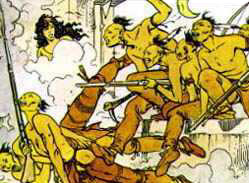
On Monday, Kitka fired off a letter to the U.S. Civil Rights Commission "asking them to do a site visit up here, and hopefully hold a hearing, in light of this recent situation that's been brought to our attention."
Excerpts of the teens' video were widely shown in the news media. Police say they know who the youths are and plan to arrest them when they have gathered more evidence.
Nearly 20 people have called offering information about the case, Detective Nancy Potter said Monday.
One man who claimed to be a victim of a paint ball attack, Martin Swanson, said he was shot about two weeks ago on Fireweed Lane. Swanson said he's an Alaska Native. He was not injured, he said, "but it sure shocked the hell out of me."
The paint balling of people, houses and cars has been going on for years, police said.
"The big difference in this case is that they targeted a specific group and we have the evidence," said Lt. Tom Nelson, commander of the central district, which includes downtown.
Wuerch said he invited Native corporation executives Barbara Donatelli and Matthew Nicolai to meet with him and police investigators working the case Monday. Wuerch also called House Speaker Brian Porter, a former Anchorage police chief, asking whether Alaska laws need to be strengthened to target hate crimes.
"They are looking at that whole question," Wuerch said. "Are the Alaska statutes adequate to deal forcefully with this type of offense?"
For Desa Jacobsson, the answer is no.
The Juneau resident and former Green Party governor candidate took to Anchorage streets last year to focus attention on the killings of Native women. She says special laws are needed to protect minorities.
"I'm sorry to say this, but it's so true: Racism exists, it's alive, and it lives in the Arctic. The evidence of this is in the deaths of those (Native) women, the rapes of Native women, and now this foolish display by these young people. Where does this hate come from?"
Anchorage Assemblyman Allan Tesche represents downtown, where the teens hunted Native people who were on foot, vulnerable, often inebriated.
"I was horrified and stunned that we saw such a graphic, firsthand view of hatred and racism in this community," Tesche said. But in his view, more laws may not be the answer.
"I would be much more interested in knowing a lot more about their families, their schools, where they grew up," he said.
"These guys don't care about laws. They were young, well-coordinated, they can run fast, they have a car, they've got gas, they think they're on top of the world. The existence of severe hate crime legislation in advance probably would not make a difference to them."
The Native-baiting teens are a disconcerting reminder, Tesche said. "There's a mean undercurrent in this community, and every once in a while it comes out of the sewer."
Racism occurs almost daily to minorities in America. Police shootings (Amadou Diallo, Margaret Mitchell, Tyisha Miller), beatings (Rodney King, Abner Louima), and racial profiling are only the most obvious examples. Here are some less well-known but still egregious examples:
"[The] subconscious association of good with European Americans is true for everyone, even African Americans, no matter how colorblind we all claim to be"
"Fifteen girls, all 5 years old, thought black dolls were 'bad' while white dolls were 'nice'"
Traffic-stop report: Blacks and Hispanics are much more likely to be searched, handcuffed, arrested, and subjected to force or the threat of it
Study: White men with prison records are offered jobs just as often as black men who have never been arrested
"From now on, your daughters will be targets....[T]hey will be taken from the reservation, raped and beaten to death, and dismembered"
Weather forecaster: "For tomorrow, 60 degrees, Martin Luther Coon King Jr. Day, gonna see some temperatures in the mid-60s"
"[E]mployers would rather hire a white man just out of prison than a black man with an unstained record"
"Massachusetts police were more likely to search cars of black and Hispanic drivers during routine traffic stops"
"Ms. Berry became only the fifth black to appear on the cover of Cosmopolitan...the first since Naomi Campbell in 1990"
"We understand that Indians are to be kept in poverty until they are forced to give up their land"
Published poem: "We have hobby—it's called breeding/Welfare pay for baby feeding"
"Look around you in Inglewood, Compton, and South-Central L.A. It is a sewer, filled with sewage"
"What do you expect from a nigger?" the woman asked casually
Black man arriving for professional job interview is told to pick up boxes
Alabama frats ban students who wear blackface, Afro wigs in racist stunts
And from around the world:
"'Little Black Sambo,' a turn-of-the-20th century illustrated children's book attacked as being racist, is on the bestseller lists in Japan this spring"
Cowboys and Indians, Thai-Style: "[G]rease-painted Indians whoop, slash scalps, guzzle whiskey, and brandish spears"
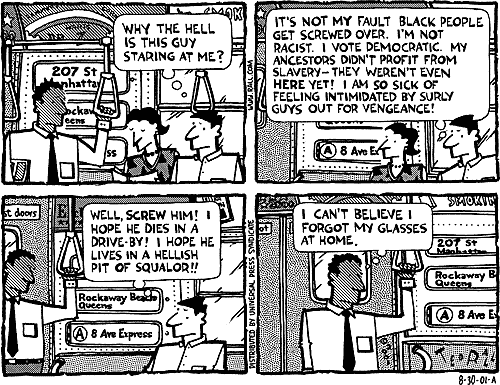
Systemic, not aberrant
Anyone who deals with racism regularly has heard the inevitable denials. "You can't blame the entire culture for the work of a few wackos." Sure we can. As the evidence shows, the problems go much deeper than "a few wackos."
Professor Jim Wolfe of Butler University describes the problem on his website:
Whites do not know what is it to be white. They do not have an identity (though the Klan would like to give them an identity that most would prefer not to own). Dominant groups do not need a distinctive identity; they get to set the standards for all (sociologists call this "ethnocentrism"). White folks do not see themselves as white, but as "ordinary, regular, and normal"—which is true in the sense that they have the power to set norms.
Being racist is normal in America. Sociologist Robin Williams lists "racism and group superiority" among dominant American values. He also lists "equal opportunity" but with the proviso that we do not expect equality of condition to ensue. Heirs of the Protestant ethic, Americans worship the "bitch goddess success (Wm James)." The American dream is acquisition of wealth surpassing others. Quite apart from personal animosity, racism takes institutional form when whites allocate the best jobs, homes, and schools for themselves while most blacks are left with inferior work, housing, and education. A quarter of blacks (27%) have incomes under the poverty line (compared to 9% for whites), and our criminal justice system is skewed to snare blacks disproportionately.
Professor Halford Fairchild writes that much of white racism is unintentional or "aversive." White people don't realize what they're doing, but they do it anyway:
Thus aversive racism is manifested in opposition to programs and policies that seek to undo white privilege or provide advantages to blacks on the basis of historical discrimination. Interestingly, contemporary research in social psychology demonstrates that the aversive racist is unaware of his or her racism; much of contemporary racism is an unconscious process.
Professor David Wellman, a (white) sociologist who has studied racism, notes the difference between what whites claim and how they act. From the LA Times, 1/11/01:
"There was—is—a discrepancy between what white Americans say in the post-civil rights movement and what they do. There's this disjunction," [Wellman] says now. "You need somebody who can help you interpret the codes that they have developed to make it look like there's no discrepancy."
Numerous surveys bolster that view. For example, most whites say in polls that African Americans should be able to live where they choose. But their comfort zone is fragile: They tend to leave a neighborhood once blacks make up more than 10% of residents.
Whites don't earn privileges
From Activist Speaks Out About Whiteness, Stereotypes in the SF Chronicle, 10/27/02:
Helfand said whites are taught to think of their lives and culture as the norm and the ideal and to see people of color as the "other." In her seminar, she uses a list of "50 Daily Effects of White Privilege" in everyday life, compiled by Peggy McIntosh, an associate director of the Wellesley College Center for Research on Women. The list details everything from "going shopping alone without being harassed" to being "pretty sure my neighbors in such a location will be neutral or pleasant to me." McIntosh writes that whites mainly see racism toward African Americans as "acts of meanness, never as an invisible system conferring unsought dominance since birth." Helfand says it is necessary for whites to "give up the myth of meritocracy," ingrained in American consciousness.
An excerpt from an article by Robert Jensen, a white professor of journalism at the University of Texas. In the Baltimore Sun, July 1998:
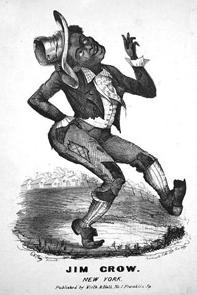
Here's what white privilege sounds like: I'm sitting in my University of Texas office, talking to a very bright and very conservative white student about affirmative action in college admissions, which he opposes and I support. The student says he wants a level playing field with no unearned advantages for anyone. I ask him whether he thinks that being white has advantages in the United States. Have either of us, I ask, ever benefited from being white in a world run mostly by white people? Yes, he concedes, there is something real and tangible we could call white privilege.
So, if we live in a world of white privilege — unearned white privilege — how does that affect your notion of a level playing field? I asked. He paused for a moment and said, "That really doesn't matter." That statement, I suggested to him, reveals the ultimate white privilege: The privilege to acknowledge that you have unearned privilege but to ignore what it means.
From Jensen's followup to his article. In the Baltimore Sun, 7/4/99:
The responses of my white critics broke down into a few basic categories, around the following claims:
1. White privilege doesn't exist because affirmative action has made being white a disadvantage. The simple response: Extremely limited attempts to combat racism, such as affirmative action, do virtually nothing to erase the white privilege built over 500 years that pervades our society. As a friend of mine says, the only real disadvantage to being white is that it so often prevents people from understanding racial issues.
2. White privilege exists, but it can't be changed because it is natural for any group to favor its own, and besides, the worst manifestations of racism are over. Response: This approach makes human choices appear outside of human control, which is a dodge to avoid moral and political responsibility for the injustice we continue to live with.
3. White privilege exists, and that's generally been a good thing because white Europeans have civilized the world. Along the way some bad things may have happened, and we should take care to be nice to non-whites to make up for that. Response: These folks often argued the curiously contradictory position that (1) non-whites and their cultures are not inferior, but (2) white/European culture is superior. As for the civilizing effect of Europe, we might consider five centuries of inhuman, brutal colonialism and World Wars I and II, and then ask what "civilized" means.
4. White privilege exists because whites are inherently superior, and I am a weakling and a traitor for suggesting otherwise. Response: The Klan isn't dead.
Are minorities too equal?
Supporting the previous points is the following excerpt from the LA Times, 10/11/94:
"I'm not a very educated person," said Ora Sears, 54, who operates a day-care center from her home in Carlton, La., "but...if I could get up there and tell [President Clinton] what to do, I'd tell him to put the schools back like they were. Everybody got along fine when I was back in school. The blacks had their schools and we did better in our schools."
Sears, who is white, is quick to point out that she harbors no ill will toward black people, but she frets that blacks don't want to work to get ahead in America. "It's getting to the point now that the blacks are feeling we owe them something for their ancestors," she said. "I just don't think this is fair. We should try to live together in the times we were born, not back in history or some time like that."
In a poll this year, 51% of the whites surveyed agreed with a statement that equal rights had been pushed too far in this country. In 1987, only 16% felt that way....
Hmm. I wonder how you push equal rights too far? Are "equal" rights acceptable as long as they aren't too equal?
As Professor Wellman concludes, "Although whites sound racially tolerant, in the end their actions and attitudes often maintain white privilege."
So racism persists on every level from blatant to subtle. It's systemic, like a disease coursing through our cultural veins. It continues because the "powers that be" want to maintain their power and control over the rest of us. And because we're too self-centered and self-satisfied to pull the wool from our eyes.
More on white privilege
Sarah Palin's white privilege
Whites Need to Take Responsibility for Their Racism (Alternate Title: Stop Giving White People 2nd, 3rd and 4th Chances When Blacks Get Zero Chances)
White Privilege: Unpacking the Invisible Knapsack
The Reality of Race: Is the Problem That White People Don't Know or Don't Care?
What Kind of Card is Race? The Absurdity (and Consistency) of White Denial
Many Whites Still Smugly Tie Their Racial Blinders Tight
White Privilege: Swimming in Racial Preference
"White Privilege exists whether you know it, acknowledge it, or understand it."
White Whine: Reflections on the Brain-Rotting Properties of Privilege
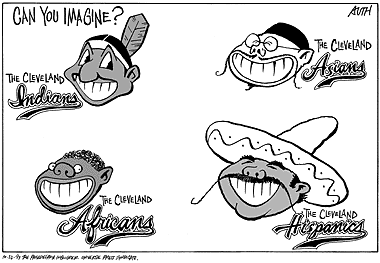
Whites reign supreme
Many people support this racial critique of society. For instance:
Whiteness is nothing but an ideology of supremacy. It's not race, it's not genetic or biological.
Elmer Griffin, associate professor of psychology and religious studies at Occidental College, in Occidental College Magazine (Fall 2001)
It's not necessary to believe that you are a racist in order to believe that African American culture is a drug-addled, criminal culture, just as you didn't have to believe yourself to be a racist in order to support slavery or segregation. All you have to believe is that you're in touch with reality. But then the reality you're in touch with has been manufactured by a pervasively racist social structure.
Crispin Sartwell, Racism Disguises Itself as the Natural Order, LA Times, 4/10/01
This author believes that racism is a mental illness, especially among those who are the advocates and inventors of hegemonic systems. It is a mental illness because it requires functioning with the academic falsification of the human record, distortion of cultural identity, and delusions of grandeur about white supremacy. At the ideological level, this is mental illness that requires continued systemic study, massive financial resources toward the deconstruction of the European colonial mind-set in the same way that such resources were devoted to the structuring of domination.
Dr. Cornel Pewewardy (Comanche/Kiowa), Why Educators Can't Ignore Indian Mascots
Conclusion
You can find evidence of racism almost every day in the newspaper. Even if you limit yourself to racism against Native Americans, as I've done, you can find evidence almost every week. As the evidence shows, racism is systemic, not an isolated aberration.
As I always say, people who think racism, prejudice, and discrimiation are things of the past are kidding themselves.
History of racism
When did racism begin?
Those evil European invaders
Red, White, and Black: The Origins of Racism in Colonial America
More on racism
The "sticks and stones" rationalization
How kids taunt Asians (and Indians)
Poor = nonwhite
No more guilt for racists?
Racism lives in ObamAmerica
The post-racial, post-Indian era?
How people see blacks (and Indians)
"Real America" = white?
Kids know bias when they see it
Never mind the Indians
Anti-Indian racism explained
Why education is difficult
Why white man hate Indians
Lack of diversity = discrimination
Race in space and elsewhere
40% of whites are prejudiced
Indians prejudiced against blacks
Racist and sexist Palin
Most racist place in America?
Everybody is racist
"Back to the reservation for U"
Racism against Ojibwe fishermen
"Reggin" and other code words
"Go back where you came from"
Stupid white-man arguments
Good cartoon on race relations
"RACE: Are We So Different?"
Mashantucket Pequots strike back
Racist article of the year
Tired of racism deniers
Racism against Indians still okay
Even a 9-year-old understands
Prejudice against Muslims and Indians
The 2008 presidential campaign
The five stages of discussing race
Mighty whitey to the rescue
The biggest monster
Jersey Indians get taunted
Hate crimes increase
Experiment proves racism
What to say to white people
More racism against Indians
Racism sinks racino
Racists among us
Standing up to racism
Mislabeling Indians causes stress
Indians disliked more than blacks
White models = beautiful
Bush bandits, dirt worshippers, and featherheads
Racism hurts...literally
White people = mean and uncaring
Whites don't know racism
See no evil, hear no evil
Amos 'n' Andy, Imus, and mascots
What motivates anti-Indian groups?
Shocked that prejudice persists
Poor, helpless white people
Is the past past?
The many excuses for racism
Environmental racism against Indians
Today's version of racism
Related links
Stereotype of the Month contest
The trouble with stereotyping...and what to do about it
Outside the so-called ethnic box
America's cultural mindset
Readers respond
Ruben Chavez: "Thank you Rob for your truth and honesty in reporting...it's much appreciated."
* More opinions *
|
|
. . .
|

|
Home |
Contents |
Photos |
News |
Reviews |
Store |
Forum |
ICI |
Educators |
Fans |
Contests |
Help |
FAQ |
Info
All material © copyright its original owners, except where noted.
Original text and pictures © copyright 2007 by Robert Schmidt.
Copyrighted material is posted under the Fair Use provision of the Copyright Act,
which allows copying for nonprofit educational uses including criticism and commentary.
Comments sent to the publisher become the property of Blue Corn Comics
and may be used in other postings without permission.


 compared to 21% for Latinos, 19% for blacks and 9% for Jews.
compared to 21% for Latinos, 19% for blacks and 9% for Jews.




